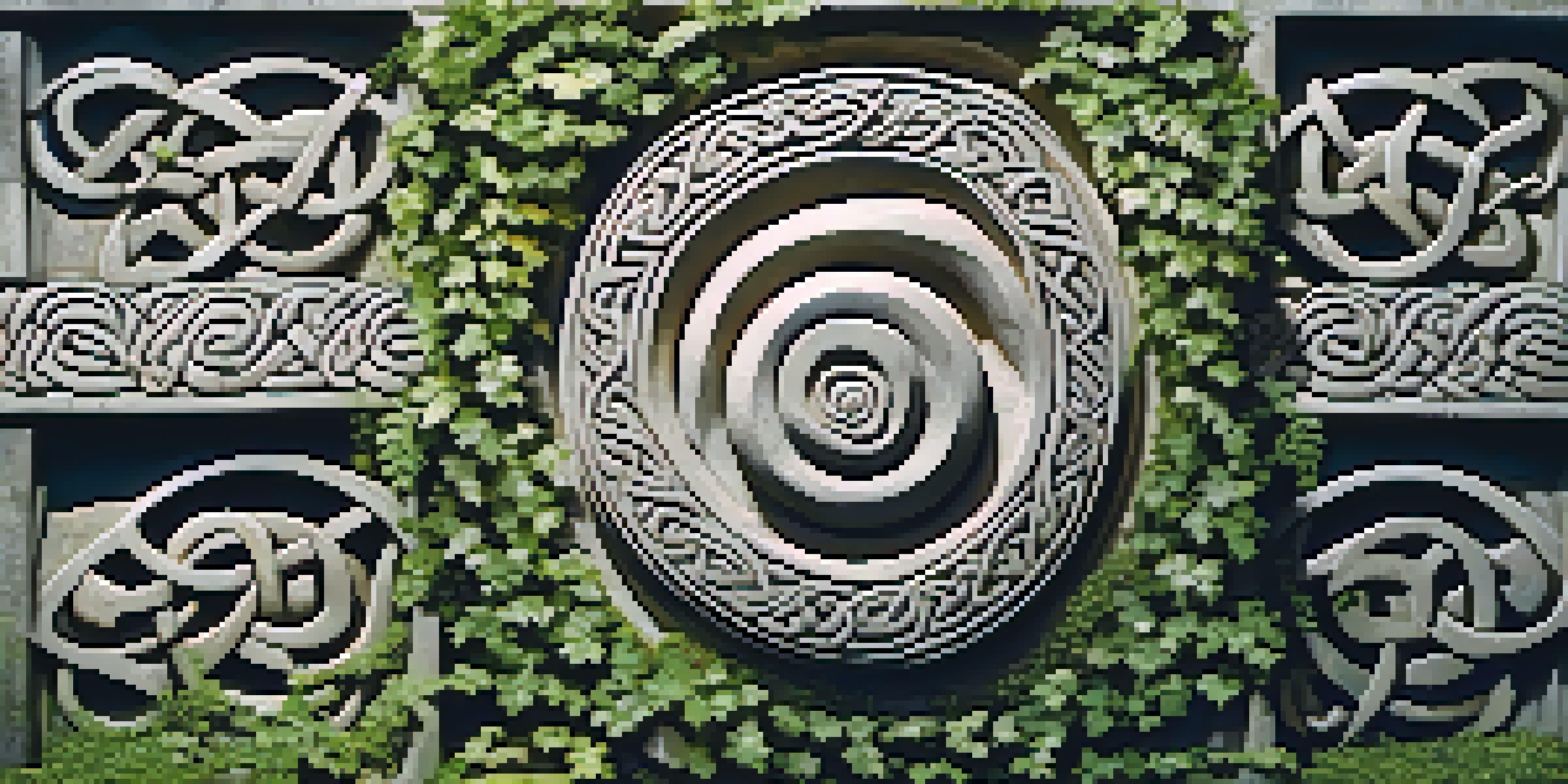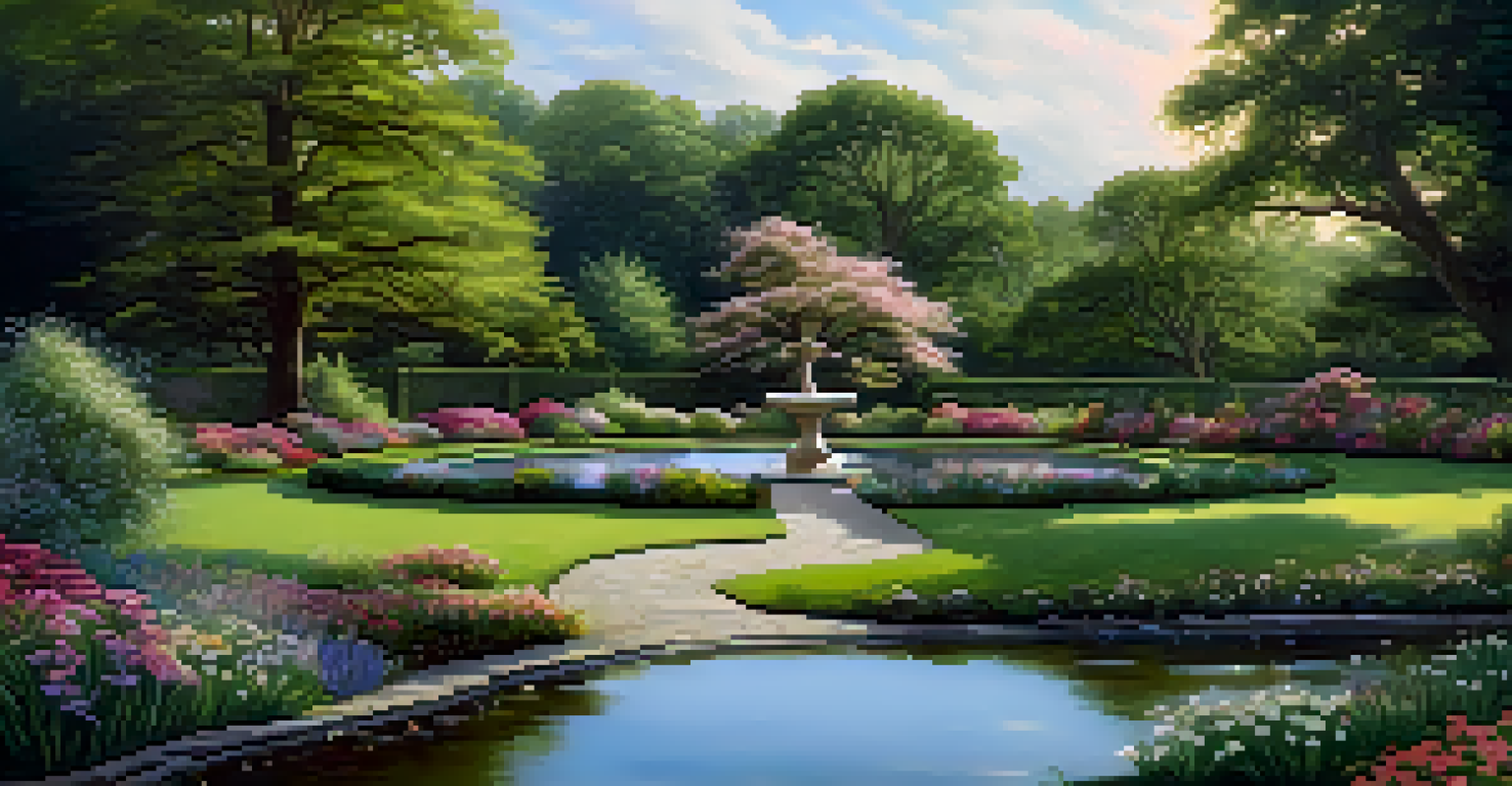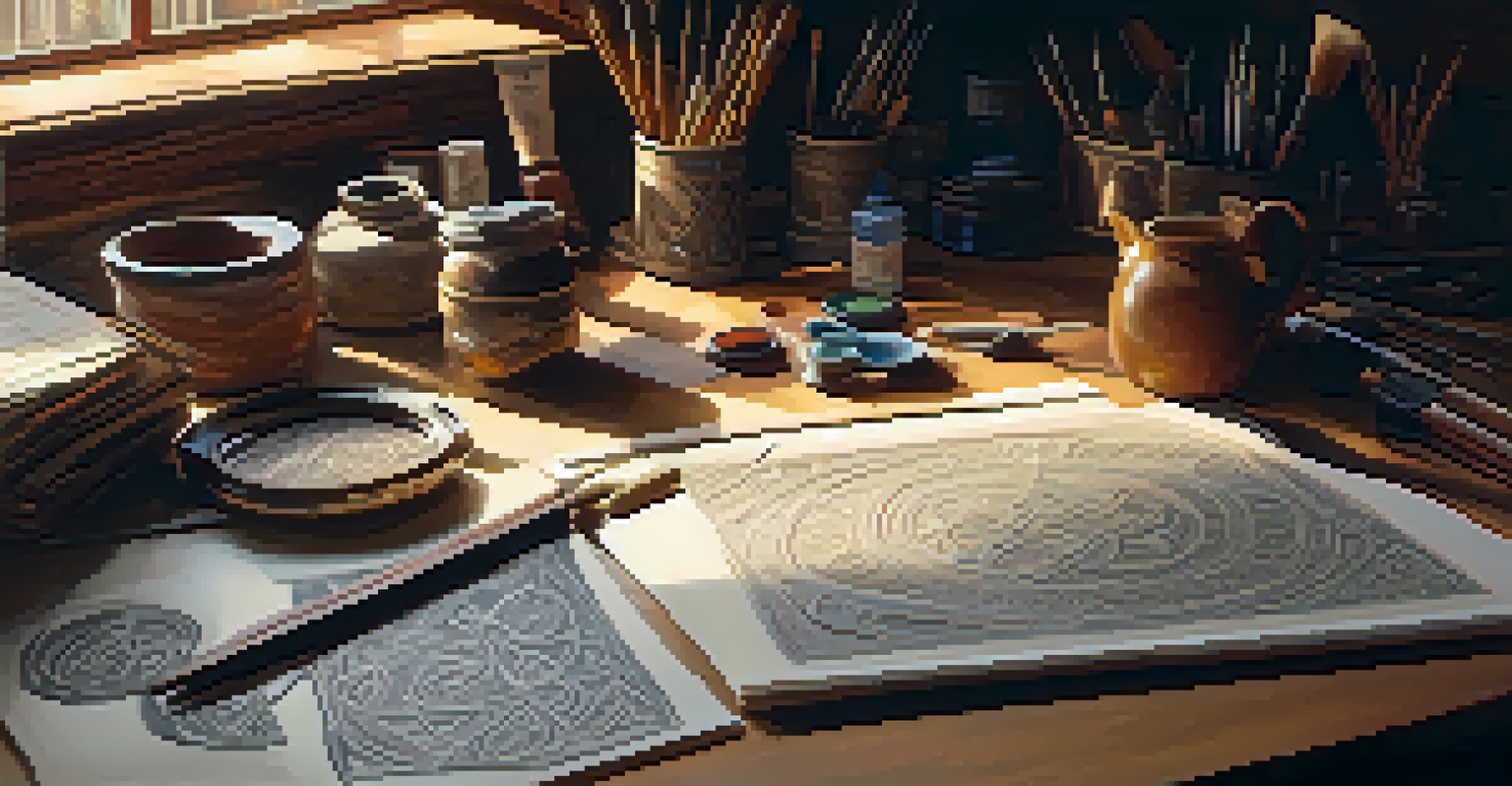Celtic Art: Spirituality Reflected Through Ancient Patterns

Introduction to Celtic Art and Spirituality
Celtic art, with its intricate designs and vibrant symbolism, serves as a window into the spiritual beliefs of ancient Celtic societies. These artworks are not just visually captivating; they are imbued with deep meanings that reflect a profound connection to the natural world and the divine. By examining these patterns, we can understand how the Celts viewed their spirituality and the universe around them.
Art is the most beautiful of all lies; it is a reflection of our deepest truths.
The Celts believed in a world that was rich with spiritual significance, where every tree, stone, and animal had a story and a spirit. This belief is vividly captured in their art, which often features spirals, knots, and interwoven designs that symbolize eternity and the interconnectedness of life. These motifs serve as reminders of the ongoing cycle of life, death, and rebirth, intrinsic to Celtic spirituality.
As we delve deeper into the patterns and their meanings, we’ll uncover how they reflect not just the aesthetics of the time, but also the values and beliefs that shaped Celtic identity. Through this exploration, we can appreciate how ancient art continues to resonate with us today, offering insights into the spiritual journeys we all embark upon.
Key Elements of Celtic Art: Patterns and Symbols
Celtic art is renowned for its unique patterns, with spirals, knots, and animal motifs taking center stage. These elements are more than just decorative; they encapsulate deep philosophical ideas about the universe and existence. For instance, the spiral often symbolizes the journey of life, moving inward or outward, while the knot represents the interconnectedness of all things.

Animals in Celtic art are also significant, representing qualities admired in nature, such as strength, wisdom, and agility. For example, the stag is often associated with the forest and the divine, embodying grace and power. Through these representations, the Celts expressed their reverence for nature and its spiritual dimensions.
Celtic Art Reflects Spiritual Beliefs
Celtic art is a visual representation of the ancient Celts' deep spiritual connections to nature and the universe.
In understanding these symbols, we gain insight into how the Celts viewed their relationship with the world around them. Each piece of art was a celebration of life, echoing their belief that the spiritual and earthly realms were intertwined, and that every element of nature was a reflection of a greater spiritual truth.
The Role of Nature in Celtic Spirituality
Nature played a pivotal role in Celtic spirituality, serving as both inspiration and a source of wisdom. The Celts believed that the natural world was alive with spirits and energies, and this belief is reflected in their art. Patterns often mimic natural forms—like leaves, vines, and waves—creating a sense of harmony between creation and the creator.
The beauty of the world lies in the details, and art helps us to see those details.
For the Celts, the changing seasons and cycles of nature were celebrated through various rituals and artworks. Each season brought its own significance, and this was often depicted in art that showcased the beauty and power of the natural world. The intricate designs serve as a reminder of the rhythms of life, urging us to embrace the changes and flows that come with time.
By incorporating nature into their art, the Celts expressed their deep respect for the environment and its spiritual significance. This connection to nature continues to resonate, reminding us of the importance of honoring the world we inhabit and recognizing the spiritual lessons it offers.
Celtic Art in Religious and Ritual Contexts
Celtic art was not merely for aesthetic pleasure; it held significant religious and ritualistic importance. Many artworks were created for specific ceremonies, symbolizing various deities and spiritual beliefs. For example, intricate carvings on stones were often used in sacred spaces, creating a visual dialogue between the earthly and the divine.
Rituals often involved the use of these artworks, which acted as gateways to the spiritual realm. The designs served to invite the presence of deities or ancestral spirits, transforming ordinary spaces into sacred ones. The spiritual energy infused in these artworks made them vital components of Celtic rituals, reinforcing the connection between the community and their beliefs.
Nature's Influence on Celtic Spirituality
The Celts viewed nature as alive with spirits, and their art often mirrors natural forms to express this harmony.
Understanding the context in which these pieces were created helps us appreciate their significance beyond their beauty. Each artwork was a testament to the Celts’ devotion, encapsulating their hopes, fears, and connections to the divine, which continue to inspire awe and reverence today.
The Influence of Celtic Art on Modern Culture
The legacy of Celtic art extends far beyond its ancient origins; it has had a profound influence on modern culture. Today, we see Celtic patterns and symbols in various forms of art, fashion, and even tattoos. This resurgence speaks to a universal appeal, as people are drawn to the rich meanings and intricate designs that tell a story of spirituality and connection.
Moreover, modern artists often reinterpret these ancient motifs, blending traditional techniques with contemporary styles. This fusion not only honors the past but also creates a dialogue between ancient and modern beliefs, demonstrating that the spiritual themes embedded in Celtic art are still relevant today.
As we embrace these designs in our daily lives, we connect with a broader narrative that transcends time and culture. The appreciation for Celtic art serves as a reminder of our shared human experience—our search for meaning, connection, and understanding within the vast tapestry of life.
Preservation of Celtic Art: Challenges and Efforts
As we celebrate the beauty and significance of Celtic art, it’s essential to consider the challenges of preserving these ancient works. Many pieces are vulnerable to the effects of time, weather, and human activity, threatening their existence. This has led to increased efforts in conservation and education to protect these cultural treasures for future generations.
Organizations dedicated to preserving Celtic heritage work tirelessly to document and restore artworks, ensuring that the stories they tell are not lost. Community engagement also plays a vital role in these efforts, as local groups often participate in restoration projects and educational workshops, deepening their connection to their heritage.
Preserving Celtic Art's Legacy
Efforts to conserve Celtic art are crucial for maintaining the cultural significance and spiritual narratives of this ancient heritage.
By raising awareness about the importance of preserving Celtic art, we foster a greater appreciation for its cultural significance. Every effort to maintain these artworks is a step toward honoring the spiritual legacy of the Celts and ensuring that their stories continue to inspire and resonate with us.
Conclusion: The Timelessness of Celtic Spirituality
In conclusion, Celtic art serves as a powerful reflection of spirituality, intertwining beauty with profound meaning. The intricate patterns and symbols encapsulate beliefs that have endured through centuries, offering insights into the human experience and our connection to the divine. This timelessness speaks to the universal quest for understanding and belonging.
As we explore the depths of Celtic art, we are reminded that spirituality transcends time and culture. The motifs that adorn ancient stone carvings still resonate with us today, urging us to look beyond the surface and seek the deeper connections that bind us all. In a world that often feels fragmented, these artworks offer a sense of unity and continuity.

Embracing Celtic art allows us to honor not only the past but also our shared humanity. It invites us to reflect on our own spiritual journeys and recognize the beauty in the patterns of our lives, reminding us that we are all part of a larger story woven through time.